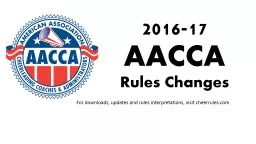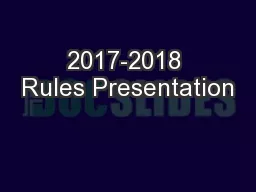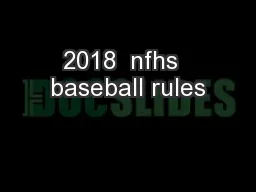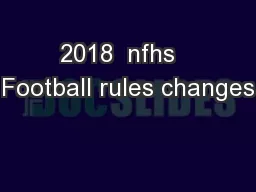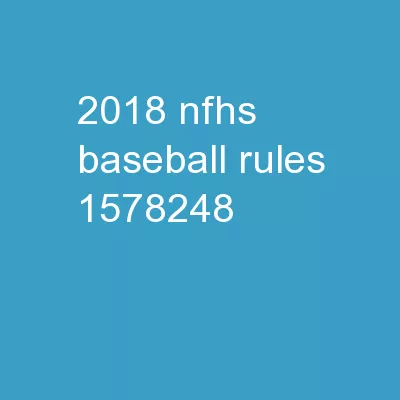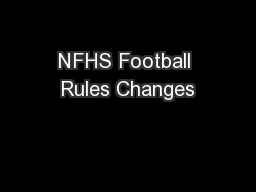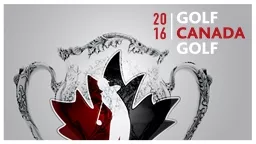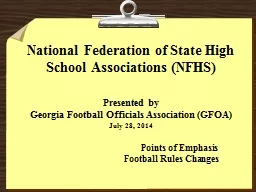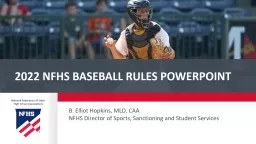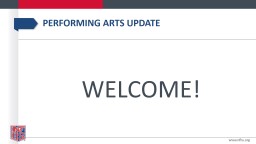PPT-2016-17 NFHS Rules Changes
Author : sherrill-nordquist | Published Date : 2018-07-10
For downloads updates and rules interpretations visit spiritrulescom General Rules Rule 217 Participants must not chew gum or have candy in their mouth during
Presentation Embed Code
Download Presentation
Download Presentation The PPT/PDF document "2016-17 NFHS Rules Changes" is the property of its rightful owner. Permission is granted to download and print the materials on this website for personal, non-commercial use only, and to display it on your personal computer provided you do not modify the materials and that you retain all copyright notices contained in the materials. By downloading content from our website, you accept the terms of this agreement.
2016-17 NFHS Rules Changes: Transcript
Download Rules Of Document
"2016-17 NFHS Rules Changes"The content belongs to its owner. You may download and print it for personal use, without modification, and keep all copyright notices. By downloading, you agree to these terms.
Related Documents

